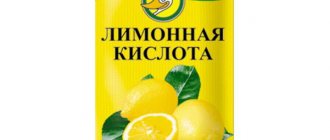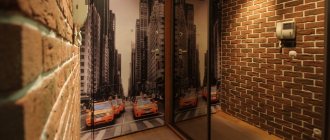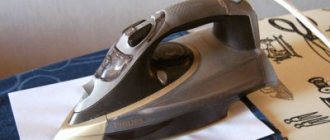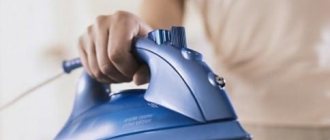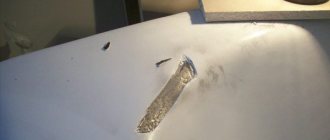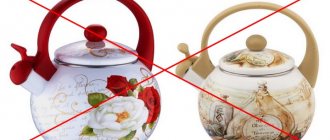This dirty yellow coating on a snow-white surface not only spoils the appearance of plumbing fixtures, but is also a breeding ground for many pathogenic bacteria that are dangerous to human health.
How to remove urinary stones in the toilet if there is water there, including old ones? There are a sufficient number of folk methods and types of household chemicals that can make the process of removing urinary stones quick and as effective as possible.
Reasons for appearance
Urine stone is nothing more than mineral particles from human urine that have settled and hardened on the walls of the toilet.
The forgetfulness of some toilet visitors to flush after themselves leads to the fact that the snow-white walls of the plumbing quickly become covered with a yellow, unpleasant-smelling coating.
Also, the accumulation of mineral deposits on the surface of the toilet bowl can be caused by:
low-quality tap water (a large amount of minerals from the water supply settle on the walls of the plumbing with each drain);- damage to the glossy surface (roughness, abrasions, chips retain urine particles, limescale);
- very rare, superficial cleaning of the toilet (plaque, settling on the walls of the toilet, hardens, transforming into a dense crust).
Draining with hot water can also cause urinary stone accumulation. High temperatures provoke the appearance of microcracks that accumulate mineral particles every time you go to the toilet.
Features of care for toilets made of various materials
To disinfect and treat to remove plaque, you need to know what material the toilet is made of:
- Porcelain fixtures coated with a special type of glaze can be cleaned without powders containing abrasive particles. Such mixtures scratch the surface and damage the structure. The advantage of porcelain is the absence of enlarged pores.
- Earthenware toilets absorb up to 10% moisture. Therefore, it is not recommended to rub them with brushes with rough, hard bristles or treat them with high-temperature water.
Information! Stainless steel plumbing products can withstand washing with various preparations. All types of cleaning products are suitable for removing stains from stainless steel.
Preparing for the removal process
To make the process of removing urinary stones faster, it is necessary to carry out a number of preparatory measures:
- Collect the necessary equipment . Cleaning the toilet is impossible without a brush, a hard sponge, a basin of clean water, and a ladle. It is important to remember that a huge number of germs and bacteria accumulate under the headband, so it is necessary to take care in advance to protect your hands, respiratory tract, and clothing.
- Choose a cleaning product . It is better to start the process of removing urinary stones with the most gentle and safe means at hand for human health. If it was not possible to remove the yellow plaque the first time, more aggressive chemical compounds will come to the rescue.
- Remove water from the toilet . Armed with rubber gloves and a ladle with a long handle (alternatively, you can use an old ladle, a jar, or a large syringe), scoop out all the liquid from the toilet. Ignoring this preparation point significantly reduces the quality of cleaning plumbing.
- Degrease contaminated surfaces . Before applying any cleaning composition, the walls of the toilet bowl are treated with liquid detergent, then rubbed with a brush and drained with clean water.
In order to prevent water from entering the cleaning agent during the cleaning process, it is necessary to turn off the tap located near the tank in advance.
General rules for cleaning a toilet
The household must have tools that can be used for cleaning. This:
- brush;
- hard sponges (change them after each use);
- pumice;
- gloves;
- protective mask.
Here's how to properly clean a toilet:
- First of all, clear space on all sides of the toilet so as not to splash anything. Use a bench for cleaners rather than placing them on the toilet lid to prevent them from falling into the appliance.
- Water is removed from the toilet. This can be done with a plunger or scooped out. The toilet should be free of sand and other debris.
- Apply cleaning agent to the entire inside surface of the bowl, including the area under the rim. In about an hour, the toilet will be disinfected and the dirt will be softened.
- Without wasting time, clean the outer surface of the device: lid, seat, tank, side parts.
- There will be no difficulties with the seat, but the hinges on which it and the lid are attached will require more attention. You will have to call for help with a brush or a hard sponge. Then they clean the bottom part of the toilet - the glass.
- It's time to return to the inner, most polluted part. Here they use a brush, rubbing the product and removing dirt from under the rim, from the bowl, and from the drain.
- Wash off with the lid closed. The brush is dried after cleaning. This is one of the conditions for preventing unpleasant odors in the toilet.
How to remove using folk remedies?
Everyone in their home has a lot of available tools that can be used to quickly clean the toilet from urinary stone deposits. TOP 5 most effective means at hand:
Citric acid does an excellent job of removing urinary stones, as well as lime deposits that have accumulated under the toilet rim.
The steps are simple: citric acid is mixed with a small amount of water (you should get a thick paste).The resulting product is applied to the stain with a sponge or an old toothbrush and left for at least three hours. Then, using a hard sponge or brush, the softened urinary stone is removed from the surface of the toilet bowl.
- Vinegar (9%) will not only dissolve urinary stones, but also help get rid of mold and mildew under the rim. The vinegar is first heated in a water bath, after which the walls of the toilet bowl are poured generously (to enhance the effect, contaminated areas can be sprinkled with soda powder). The treated surface is left to soak for at least six hours, after which the urinary stone can be easily scrubbed off with a stiff brush.
- Technical oxalic acid (sold in the hardware departments of large supermarkets) will quickly dissolve urinary stones. Oxalic acid is used in the following way: the crystals are poured onto the dirt in a fairly dense layer and left to react for five to six hours. Afterwards, the stone can be easily removed from the walls of the toilet with a stiff brush. You can work with oxalic acid only with rubber gloves in a well-ventilated area.
- Coca Cola . Phosphoric acid in Coca-Cola makes everyone's favorite carbonated drink an effective remedy in the fight against urinary stones. The steps are simple: at least three liters of Coca-Cola are poured into the toilet and left overnight. In the morning, dirt can be easily removed with a brush.
- Whiteness is a chlorine-containing liquid that dissolves urinary stones and disinfects the walls of the toilet bowl. It's very simple: pour white on the plumbing fixtures and leave for five to six hours. After the surface is thoroughly cleaned with a brush and rinsed with water.
It is necessary to remove urinary stones with the toilet doors open, protecting your hands with rubber gloves and your respiratory tract with a respirator.
The video will show you how to remove urinary stones in the toilet:
How to deal with old pollution
There are many ways and means:
Oxalic acid
How to remove limescale from a toilet? Oxalic acid, like all other acids, destroys lime deposits. You will have to wear protective gloves to work. Acid in powder form is applied to a sponge and the stains are scrubbed away. Or dissolve directly in the toilet, leave for a while, and then use a brush to properly clean the bowl and drain. Then rinse with water a couple of times.
Orthophosphoric acid
They use a 7% solution, which is not forbidden to pour into the tank. Orthophosphoric acid is also not harmful to pipes made of plastic. The acid is poured in for a quarter of an hour, then cleaned and washed off. 150 grams of product is enough. It is important that it allows you to fight rust. Acid is found in auto stores and among radio products.
Aggressive substances
Hydrochloric acid and electrolyte are effective, but dangerous to use. You can wash anything with them, but it’s better to use household chemicals that contain these substances. Both are capable of corroding plastic and rubber components of plumbing fixtures.
How to clean with special compounds?
On the shelves of hardware stores there is a wide range of household chemicals intended for cleaning plumbing fixtures.
For those who want to quickly restore the whiteness of the toilet walls as quickly as possible, you should pay attention to those products that contain formic or hydrochloric acid, sodium sulfate or carbonate. They are the ones who best cope with the yellow plaque of urinary stones.
TOP 3 most effective chemical compositions:
DOMESTOS gel PINK
A cleaning product whose special formula helps to quickly remove dense limescale , urinary stone, and all types of germs and bacteria. The average cost is 125 rubles. (volume 0.75 l). Read reviews here and here.
PROFIT SANI-GEL
Gel-like acid concentrate . In just ten minutes, it dissolves lime deposits, urinary and soapstone without leaving a trace, removes rust, and disinfects the walls of the toilet bowl.
The gel lays on the contaminated surface in a dense layer and does not drain from the walls, which allows you to use the cleaning agent sparingly. PROFIT SANI-GEL does not contain chlorine. The average cost is 120 rubles. (volume 0.75 l).
BATH EXTRA
An extra-strength cleanser with a thick, gel-like formula. Without any residue, it dissolves old, ingrained contaminants such as limestone, urinary stone, and rust. Eliminates unpleasant odors and disinfects toilet walls. Does not leave streaks after rinsing. The average cost is 180 rubles. (volume 1 l). You will find reviews here.
Toilet bowl cleaners are used strictly following all manufacturer’s recommendations, without exceeding the contact time of plumbing surfaces with aggressive chemical compounds.
This video will show you how to remove urinary stones from the toilet:
How to clean a toilet brush
An item designed for cleaning quickly becomes dirty and ceases to perform its function one hundred percent. Don't buy a new one every month. What to do?
To clean it, use the same products as for the toilet: Silit, Domestos, and others similar. They are diluted in a suitable container, a brush is placed, and after 2 hours they are washed with clean water. Then place it between the toilet and the seat to drain the water.
Here's a way to make a pipe cleaner white and odorless. Combine detergent, 100 grams of soda, 2 tablespoons of salt, 50 ml of vinegar in a container, pour boiling water over everything. Place the brush in the solution for an hour or two, then rinse thoroughly.
Dishwashing gel can be poured into the brush holder. This ensures the cleanliness of the item and a pleasant smell in the toilet. For disinfection use Whiteness, Toilet duck.
It is important to store the brush correctly. A stand is definitely needed. Better provided by the manufacturer. Or a suitable container for draining water. Liquid from the brush should not get on the wall, floor or toilet. Once every three to four months the accessory is replaced with a new one.
Prevention measures
Several rules will help you maintain perfect cleanliness of the plumbing in the toilet
- Regular cleaning. The toilet needs to be cleaned not when an impenetrable layer of urine and limestone has accumulated on its walls, but every day
- Using tablets for the tank. Special tablets that soften the water in the toilet tank prevent the growth of urinary deposits on the walls of the toilet.
- Checking the serviceability of the drain tank. It is important to prevent water from leaking from the tank. Otherwise, a yellow coating and rusty stains will very quickly appear on the walls of the toilet.
Just ten minutes a week spent on preventing the appearance of urinary stones will save several hours needed to completely remove stubborn stains.
Prevention of urinary stones and limescale
To prevent the appearance of severe contamination, it is necessary to follow several rules for caring for plumbing equipment:
- use the toilet for its intended purpose, flush regularly,
- do not pour out the remaining fatty food: it does not dissolve well in cold water and remains on the walls of the bowl,
- carry out preventive work once every 2 weeks, using folk remedies and chemical reagents,
- promptly clear any clogs that have appeared, avoid deposits,
- ensure that the drain works correctly, eliminate leaks in a timely manner,
- Use cleaning agents suitable for this toilet material.
Timely cleaning and maintenance of the toilet in hygienic conditions can extend its service life.
What not to do and why?
Do not remove urinary stones with a sharp knife or wire brush. The result of such actions will be deep scratches, into which dirt, germs and lime deposits very quickly accumulate.
Do not mix chemicals from different manufacturers . The result of such “experiments” is unpredictable.
Do not use dry abrasive powders for daily cleaning of the toilet. Large particles scratch the enamel of the toilet bowl, causing the snow-white surface to become covered with urinary stones many times faster.
How to keep the toilet clean?
No matter how well you clean the toilet, after a while a new layer of plaque will form there. Therefore, it is necessary to carry out prevention as often as possible. We offer several simple preventive measures.
№1. Clean the bowl from any dirt every time and do not skimp on water for draining.
№2. Place a special product under the toilet rim that masks the odor and kills germs and plaque.
Special multifunctional products remove unpleasant odors, clean the coating, and make the water softer. A small dose of gel is squeezed out after each rinse.
№3. Eliminate the leak in the drain tank, as it only causes plaque to build up. If the leak is left, then after cleaning a new coating will appear very quickly.
№4. If hard water flows through the pipes, then it makes sense to throw special tablets into the toilet cistern to reduce hardness.
№5. Try not to clean the toilet with a steel brush. It leaves small cracks that destroy the enamel and contribute to the accumulation of plaque.
Special tablets for softening hard water will help neutralize its effect on the enamel of the toilet bowl. They should be placed directly into the tank
№6. It is advisable to clean the toilet using special products at least once a week or two, depending on how many people use it. Use only liquid or gel cleaners and soft cloths.
№7. Do not pour grease and other leftover food into the toilet, especially hot food.
By following these simple rules, you can easily keep your toilet clean. The main thing is not to let the problem get worse and carry out scheduled cleanings on time.
Adviсe
A few life hacks from experienced housekeepers will help you keep your toilet plumbing clean. By adjusting the flow in the tank, you can reduce the accumulation of urinary stones in the toilet.
Chemical cleaning products have a strong, unpleasant odor . It is better to close the toilet lid while treating urinary stones. Otherwise, strong odors can cause headaches.
Thick, ingrained yellow deposits will remove battery electrolyte. Having protected your hands with gloves, your eyes with safety glasses, and your respiratory tract with a respirator, the walls of the toilet bowl are filled with electrolyte. In just five minutes, your plumbing will shine like new.
All the most important and useful information on cleaning the toilet is presented in this section.
How to use baking soda to clean your toilet
Do not neglect soda - baking soda or ash. Generously sprinkle the toilet bowl with the product. After a few hours, treat the device with a brush and wash off the cleaner with water.
How to clean a toilet with a mixture of baking soda and vinegar. Also a simple way. Sprinkle soda over the entire internal surface of the device, clean it after a short time, wait another 20 minutes and pour vinegar on top. Naturally, a reaction will occur, at which time the stains are cleaned. Baking soda will remove fatty deposits, and vinegar will remove rust and plaque formed by hard water.
Universal toilet cleaning products
We bring to your attention a list of products that can be used to comprehensively clean the toilet from any type of contaminant.
Cillit Bang Toilet Gel
Cillit Bang gel
Silite is based on hydrochloric acid, which is a fairly aggressive organic acid. Thanks to this, Silit effectively copes with rust and urinary stone.
- high cost (average price - 250 rubles);
- There is no childproof cap.
Toilet duckling active 5 in 1 gel
Like Silite, Toilet Duck contains hydrochloric acid, but it is not as effective.
- reasonable price (about 180 rubles);
- The line includes several types of scents, so you can choose the most suitable one;
- gel-like, medium-thick structure;
- the presence of an original spout allows you to evenly distribute the substance;
- The kit includes a childproof cap.
Methods and means for removing yellow plaque
It’s easy to wipe off the yellow coating using any store-bought or folk remedy. If you leave everything as it is, then the slight yellowness will transform into hard deposits, which will be more difficult to deal with. These remedies will perfectly help to cope with the problem.
Folk
The means at hand help get rid of fresh dirt. It is better to deal with old ones using professional household chemicals.
- Regular vinegar applied to the areas of greatest accumulation of stone will soften it. Before carrying out such a procedure, water is pumped out of the toilet, the walls are wiped with a dry cloth, and a napkin well soaked in vinegar is applied to the affected areas. After 2–6 hours (depending on the degree of contamination), the napkin is removed and the remaining stone is cleaned with a scraper. If the deposits are not advanced, then it is enough to use a sponge with the abrasive side. For a more powerful effect, heat the vinegar to 50 degrees, add soda to it - 1 teaspoon per 200 ml or iodine in a 1:1 ratio.
- Oxalic acid is small, colorless crystals that effectively fight stone. It is applied under the rim of the toilet, after diluting it with water.
- Citric acid is one of the most popular budget ways to make the toilet shine clean and exude a pleasant lemon aroma. A twenty-gram packet of this product, applied overnight to the walls of a plumbing accessory, will dissolve the entire stone, if it is thin. The amount of acid required depends directly on the condition of the toilet. According to most owners, this is one of the effective cleaning methods, giving excellent results after 2-3 uses, even with heavy deposits.
- Baking soda left overnight on plaque areas will dissolve all dirt by morning. It is enough to run a brush several times along the walls and rinse off. If necessary, you can repeat the procedure again. To enhance efficiency, Pemolux cleaning powders are added to the soda mixture.
- Soda, like Coca-Cola. Everyone knows their effect on clogged pipes. The toilet is no exception. By pouring 2-3 jars inside overnight, everything will be sparkling clean by morning. If the area of contamination is small, a cloth soaked in a similar liquid and applied to the stone will dissolve and remove it within 5-6 hours.
Professional
If traditional methods do not give the desired result, then you should seek help from more powerful chemical compounds that help clean the toilet from stone.
Orthophosphoric acid. This method cleans the walls of the toilet, as well as the flush tank inside, after rust appears in it. Even 100 gr. acids poured into a tank or toilet for 15 minutes will effectively clean urinary stones with limescale. Next, you need to rinse off the water and rub it over the surfaces with a brush. The chemical composition does not affect plastic, rubber or ceramic coatings
The main thing is to protect your hands and other exposed parts of the body when using it.
Hydrochloric acid solution is a strong remedy that requires careful, very careful use. It is not recommended to inhale its vapors
It is enough to apply the product on the walls for 15 minutes and close the lid. This is a fast-acting way to get rid of any old dirt. It should be remembered that this solution is not suitable in places where the toilet is connected to a plastic pipeline.
Battery electrolyte in liquid form. This product is used by car owners. This is a powerful combination of sulfuric acid and purified water that can quickly remove long-standing plaque. Remedies and methods of application are similar to the previous method. The electrolyte is not used regularly. This is rather an option - to quickly and one-time clean an old toilet, inherited from previous owners or purchased, but already in use.
Chlorine is the basis of many household chemicals. The most famous remedies are “Belizna” and “Domestos”. Do not forget about the dangers of such drugs on human health. In order for the substance to clean the walls with the stone, it is enough to apply it with a brush for a period of 30 to 60 minutes, and then rinse with water.
TV advertisements are full of various toilet cleaning products. Buying them won't be difficult. Most contain hydrochloric acid - “Master Shine”, “Sanitary” gel. To use, they are applied to the toilet rim, waited for up to 1 hour, and then washed off using a toilet brush and water from the tank.
Powders are not the best option for cleaning the toilet. This is a labor-intensive, complex process that results in scratches and damage to the surface. But sometimes there is no alternative, you need to wash sanitaryware with something - Comet, Luxus. In this case, all the liquid is pumped out of the toilet, an abrasive agent is applied and rubbed in with a brush or a hard rag until the plaque is completely removed.
Cleaning products with abrasives
Compositions of this type necessarily contain abrasives. These are very small, but sharp and hard particles, with the help of which mechanical surface treatment is carried out. Abrasives literally peel away dirt, thereby removing it from the surface. They are added in different quantities to cleaning products.
In any case, it is not advisable to use such mixtures on ceramics. This is especially true for sanitary porcelain. Abrasives leave marks similar to scratches on a smooth surface. Over time, more and more of them accumulate, the bowl becomes rough, literally “attracting” dirt.
Powders with abrasives cost very little, so they are very popular. However, you need to remember that solid particles spoil the surface of plumbing fixtures
If you still want to use cleaning products of this type, you should read the instructions on the can. Most often, in addition to abrasives, they contain some kind of bleach. Therefore, most manufacturers advise using their products in this way.
The powder is applied to a sponge moistened with water or directly to the bowl, after which it is intensively rubbed into the surface. Then you should leave the product for a while so that it “works” effectively. Then rub thoroughly with a sponge again and rinse with water.
Sources
- https://domopravitelnitsa.com/uborka/mochevoy-kamen-v-unitaze.html
- https://chistsovet.ru/uborka/kak-ochistit-unitaz/
- https://lukochko.ru/kak-pochistit-unitaz/
- https://hozzi.ru/uborka/kak-pochistit-unitaz
- https://remont-book.com/kak-ochistit-unitaz-ot-izvestkovogo-naleta-i-mochevogo-kamnya/
- https://sovet-ingenera.com/santeh/unitaz/chem-ochistit-unitaz-ot-izvestkovogo-naleta.html
- https://navseruki.guru/uborka-doma/uborka-v-vannoj-komnate/kak-ochistit-unitaz-ot-izvestkovogo-naleta-i-mochevogo-kamnya.html
- https://sovet-ingenera.com/santeh/unitaz/kak-pochistit-unitaz.html
[collapse]

